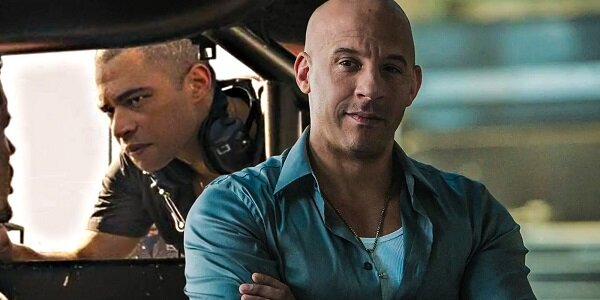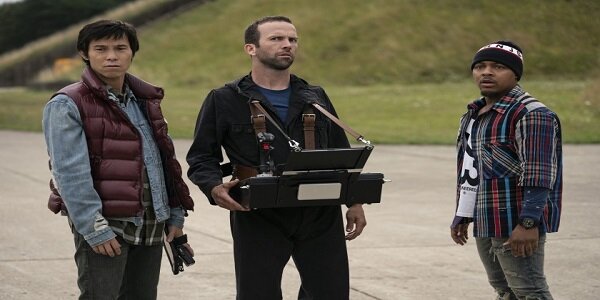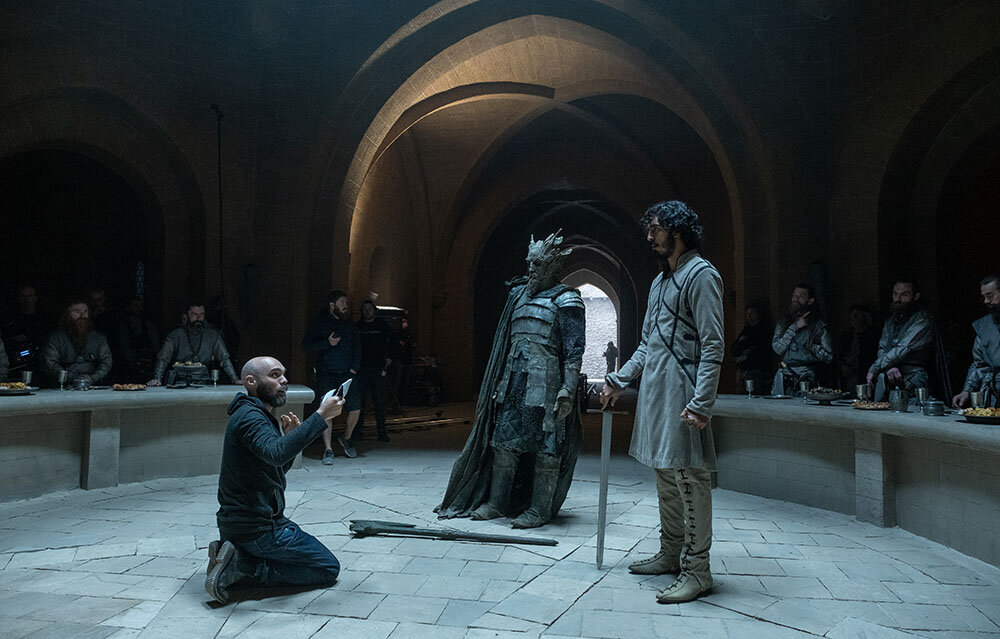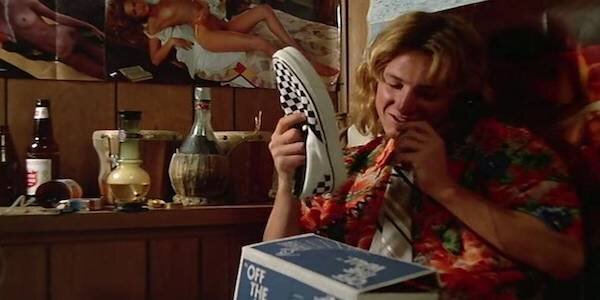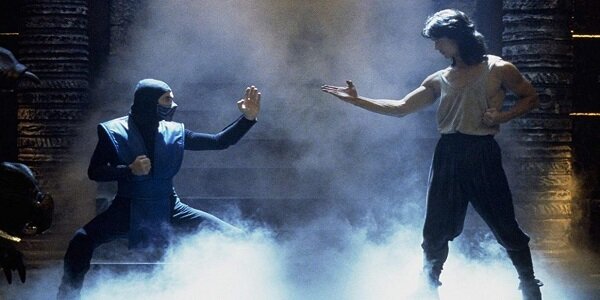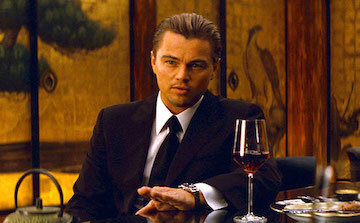13 Thoughts You Have While Watching "F9"
Before Fast & Furious became the larger-than-life global sensation that it is today, it all started twenty years ago with a tuna sandwich and a truck full of stolen DVD players. Originally pitched as Donnie Brasco meets Days of Thunder, 2001’s The Fast & The Furious was a profoundly influential action movie that set the tone for a new millennium. The premise follows a renegade crew of street racers gridlocked in an undercover police plot — a relatively simple formula with exponential modesty in comparison to the nitrous-fueled stunt show it eventually became.
Twenty years, one spin-off, and an animated series later, viewers are left with one burning question: how do these keep getting made? As the franchise keeps expanding in mainstream recognition, its sprawling vehicular voyages through Tokyo, London, Brazil, Mexico, Dubai, and of course L.A. keep intensifying in both complexity and execution.
With respect to their humble beginnings, they’ve managed to construct an affably self-actualized charm that exists behind the priceless cars, buckets of Corona, and baby-oiled juggernauts bursting out of an Under Armour shirt. Just like Predator and Godzilla, history has shown there’s popular value in mindless muscular spectacle. With the emergence of the franchise’s tenth overall entry, it’s become abundantly clear that these movies are bulletproof to any meaningful review or assessment. Instead, let’s tap into a livestream of moviegoing consciousness while following along to Justin Lin’s explosively fun F9.
Some spoilers ahead
“Can’t believe they gave us Young Toretto.”
The film opens in 1989 at a race track where young Dominic Toretto (Vinnie Bennett) watches in horror as his father Jack (JD Pardo) dies in a fiery collision. For two decades now, Vin Diesel has helped shape the mythology and archetype around this enigmatic series protagonist, especially since the untimely demise of his radiant co-star Paul Walker in 2013.
This prologue helps build character and context but also reveals a new development in the ongoing saga: Dominic apparently has a younger brother named Jakob. This newly revealed information highlights the primary conflict in the movie, as well as establishes the unifying themes of family and fatherhood.
2. “The gang’s all here.”
The returning main cast of Vin Diesel, Michelle Rodriguez, Tyrese Gibson, Jordana Brewster, Nathalie Emmanuel, and Ludacris comprise members of a family so prolific, it gives the Avengers a run for their money. Their collective chemistry produces a fun synergy that helps make the F&F movies so easy to return to every few years.
From Roman and Tej’s (Tyrese and Ludacris) constant bickering to Dom and Letty’s (Michelle Rodriguez) unwavering loyalty, many viewers have developed a deep attachment to these characters and their relationship to one another over the course of ten movies. Though your mileage may vary with that, it’s safe to say this mobile heist crew runs deep and provides exactly what the movie needs to keep its fanbase invested.
3. “No way John Cena could ever pass as a Toretto.”
At first glance, John Cena as Dominic’s estranged brother Jakob doesn’t exactly fulfill Toretto family expectations. Is this largely due to the fact that by now, we still have no clue what ethnicity they’re supposed to be? This ambiguity is acknowledged and quickly dispelled by recurring series antagonist Cipher (Charlize Theron) in her offhanded observation that “the Torettos have quite the mixed bloodlines”.
When it comes to performance, John Cena imbues Jakob Toretto with a gruff but stoic sort of stillness. This quality runs parallel to Vin Diesel’s now-famous portrayal of the philosophically complicated Dominic. Cena’s cartoonishly bulky frame takes up a massive amount of physical space within the movie, undoubtedly a representation for the imposing esteem that orbits the entire Toretto family. Maybe he is fit to wield the iconic crucifix pendant after all.
4. “By this point, any threat they’re facing is completely inconsequential.”
Around Fast Five, the series broke free from its narrative inhibitions and revved up to a whole new level. Since then, each new film introduces a new villain hellbent on carrying out some absurd global terrorist plot, an effort that is inevitably foiled by the forces of family and teamwork.
No one can argue that their conscious shift hasn’t been great for the franchise—they’ve earned $1.16 billion in global revenue since the sixth entry. Though it now lacks the gritty urban practicality of the first two films, director Justin Lin knew they had to adapt with the times, lest it fade into obscurity to become just another generic car movie. When the previous film shows The Rock redirecting a thermonuclear missile with his own bare hands, you should know exactly what you’re signing up for in these movies by now.
5. “Tyrese is MVP material.”
The most explosive blockbuster franchise of all time needs a character that audiences can relate to. Since 2 Fast 2 Furious, no performer has captured this essence like series favorite Roman Pierce, played by Tyrese Gibson. Over the course of 18 years, they’ve reconstructed his entire character to go from the cocky wild card to the lovable everyman who knowingly points out logistic flaws in the movie’s often insane premise.
During one hilariously self-referential moment in F9, Roman’s latest brush with danger makes him question his very existence asking “y’all ever thought about how many wild missions we’ve been on? And yet somehow we always survive?”. His tragically comic self-actualization in this moment is a thinly veiled wink to the audience and those willing to suspend their disbelief for a couple of hours.
6. “Holy sh**! The Tokyo Drift squad is back!”
The oft-forgotten third entry in this high-octane franchise was Fast & Furious: Tokyo Drift. The inexplicable 2006 sequel seemed to come out of nowhere and featured no original characters from the first two movies, save for Dominic Toretto’s surprise cameo in the epilogue. It also introduced audiences to Han (Sung Kang), the soft-spoken, snack-crunching globetrotter.
Along with Han, Tokyo Drift’s two main protagonists Sean and Twinkie (Lucas Black and Bow Wow) also make their triumphant return to the franchise in F9. Tej and Roman have the distinct pleasure of catching up with them in Tokyo in the middle of their latest misguided experiment—a Pontiac Fiero modified to fly in outer space. You know where this is going.
7. “These walk-on cameos are getting out of hand.”
Helen Mirren, Ja Rule, Ryan Reynolds, Kevin Hart, Ronda Rousey, Iggy Azalea—what does this random gathering of celebrities have in common? They’ve all made an appearance in a Fast & Furious movie at some point in the last two decades. Sometimes they’re racers, flaggers, heavies, syndicate overlords, and in Ryan Reynolds’ case, a Special Forces agent doing a Ryan Reynolds impersonation.
F9 welcomes its latest star into the eclectic mix: Bronx native Cardi B. Sporting full-blown tactical body armor, her surprise appearance as the head of a paramilitary group rescues Dominic and aids his getaway in the back of an Interpol van. For a lovable franchise that has so expertly made fans expect a puzzling cameo or two, this one might be the most absurd; even when counting the perplexing sexual chemistry between Helen Mirren and Vin Diesel.
8. “Dominic Toretto does not abide by any laws of physics.”
To be honest, no one in these movies tends to obey the Newtonian laws of physics; by this point, every member of the crew is pretty much a superhero. The spectacular crashes they’ve endured would have vaporized their bones by now. However, none of them are bigger offenders of this than their fearless leader Dom Toretto. His silhouette is a formidable sight, like a gorilla in a tanktop and Lugz boots. On paper, he should not be aerodynamic.
Despite his dense muscular build, in every movie he’s appeared in since Fast Five, Dom has catapulted off of cars, tanks, trains, airplanes—if it has wheels, Toretto has probably jumped it. Every single time he somehow manages to land safely, often in superhero pose. He’s flown 75 feet through the air and tackled so many people in mid-flight, he might as well play free safety for the Rams. Every great action franchise needs one hero who evokes total invincibility; Dominic Toretto has consistently proven he’ll rise to the occasion.
9. “They should have left Han’s resurrection out of the trailer.”
The marketing for F9 teased the storied arc of Han’s prodigious return. After his apparent death at the hands of Deckard Shaw (Jason Statham) in a mid-credit stinger for Fast & Furious 6, it was long speculated he’d return at some point. Similar to Letty’s comeback after her death in the fourth sequel, it’s a running joke that many people who die in the Fast & Furious franchise never permanently stay gone.
While Han’s return is emotionally satisfying from a fan service perspective, it was highly expected by anyone who happened to watch the Super Bowl spot. As an audience member, the emotional weight of that moment is completely undercut by the fact that you know it’s coming.
10. “Magnets.”
Each movie in the multi-billion dollar franchise boasts at least one sequence that was made to leave viewers in dumbfounded euphoria. They’ve dragged a 9,000 lb. bank vault through the streets of Rio De Janiero, flipped a military tank using high-grade tension cables in the Canary Islands, but F9’s pre-eminent set-piece conjures a stunt that might surpass all which have come before it: supercharged magnets.
The stunt’s simplicity is also its fundamental genius, despite how incredulous its logic is. In order to retrieve a weaponized apparatus known as Ares, Jakob’s crew implants hyperactive magnetic devices in their vehicles. When Dom and company come into possession of said vehicles, no enemy is safe as their cars are dragged in, only to be violently hurled aside like a Darth Vader force push. It might not make sense but it’s sure to satisfy those who tune in to see outlandish destruction.
11. “Aaaaand we’re in outer space now.”
In another move that was highly publicized in trailers and marketing material, the Fast & Furious saga finally goes interstellar in F9. In a convoluted effort to destroy a satellite in low orbit, Tej and Roman shoot the rocket car into space and ram it through the hull with some help from their friends over at NOS.
It seems ridiculous that a character who was introduced as a demolition derby driver in Barstow would somehow make his way into outer space. However, based on the scientific reasoning as presented in the franchise, their logic holds up pretty damn well. The moment you see the bright blue surface of Earth reflecting off Roman’s makeshift scuba helmet feels appropriately earned after years of jumping the proverbial shark.
12. “They even resurrected the Orange Supra.”
As Tej so lovingly proclaims in Furious 6, “it’s all between you and the car you build.” You don’t need to be a car fanatic to understand the iconography behind some of the most memorable vehicles they’ve driven since 2001. For a franchise whose roots trace back to a Vibe article about illegal street racing, the cars are embedded into the center of these films. So much so that they’re almost characters in themselves.
The Fast & The Furious showcased a smorgasbord of priceless import tuners, the likes of which inspired a new generation of gearheads and helped create modern car culture as we know it. The most iconic of which: the Buster-mobile: a souped-up, bright orange ‘94 Toyota Supra. Not only was this car stunning (by early millennium standards), but more importantly, it represented the inextricable bond between Dominic and Brian (Paul Walker). Bringing its later model back for F9 felt like a homecoming, both acknowledging its past while looking forward to its bright and ever-evolving future.
13. “Backyard barbecues are the lifeblood of this franchise.”
When the carbon fiber dust settles, the sentimental value is what keeps us coming back for more. For twenty years, the Fast & Furious saga has unfolded like an epic soap opera exploring love, loss, betrayal, and redemption—this is the apex of human drama, but with more destruction.
We’ve come a long way and invested countless affection into these characters, as well as some of the ones we’ve lost along the way. At the risk of buying into the cult of its overblown memefication, this movie really does its best to make audiences feel like family. The film’s endearingly corny epilogue brings us back where we always feel at home: among friends, giving thanks for the ones who always have your back. Also Corona. Corona always has your back.


